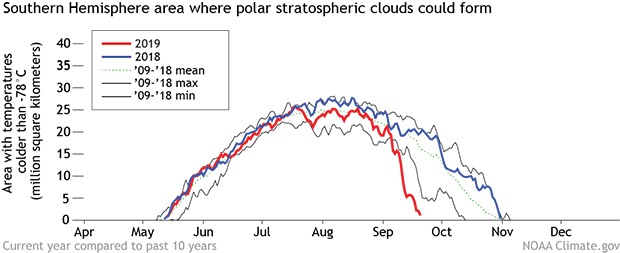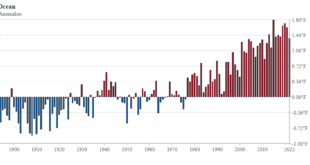According to the NOAA article Five questions about 2019’s record-small ozone hole by Rebecca Lindsey (10/21/2019):
In 2019, the hole that developed in the ozone layer over Antarctica was the smallest on record since 1982, according to the NASA/NOAA press release. In an average spring, the hole expands throughout September and early October to a maximum extent of about 8 million square miles (21 million square kilometers), an area larger than the United States and Canada combined. In 2019, the hole reached 6.3 million square miles (16.4 million square kilometers) on September 8, but then shrank to less than 3.9 million square miles (10 million square kilometers) for the remainder of September and the first half of October.
Why so small?
An uncommon weather event—a sudden stratospheric warming—disrupted the circulation in the polar stratosphere in early September, just as the ozone hole was beginning to form.
What about the future?
No, this year’s small ozone hole was simply the result of an isolated weather event, not part of a trend. Thanks to the international treaty banning the production and use of CFCs (short for chlorofluorocarbons), levels of these compounds have been declining since about 2000. But because CFCs are so long-lived, concentrations remain high enough to cause significant ozone loss each spring. With continued declines in CFCs, experts project the ozone layer will recover to its 1980 conditions around 2070.
There are three other graphics and the article is worth reading. If you are looking for classroom materials related to the ozone hole consider the Near-Ground Level Ozone Pollution Lab posted by NOAA and designed by SERC. Also note the Ozone project in the Calculus Projects page.

